Emilia had never properly seen the scar on her back, the result of an operation she underwent as a baby. So the six-year-old was not going to pass up an opportunity to finally get a good look at the mark she is so proud of, as it makes her ‘scar buddies’ with her mum Jenny.
Jenny has a scar across her lower stomach, as Emilia was born via planned caesarean section. Emilia has spina bifida, a condition that has left her paralysed from the knees down
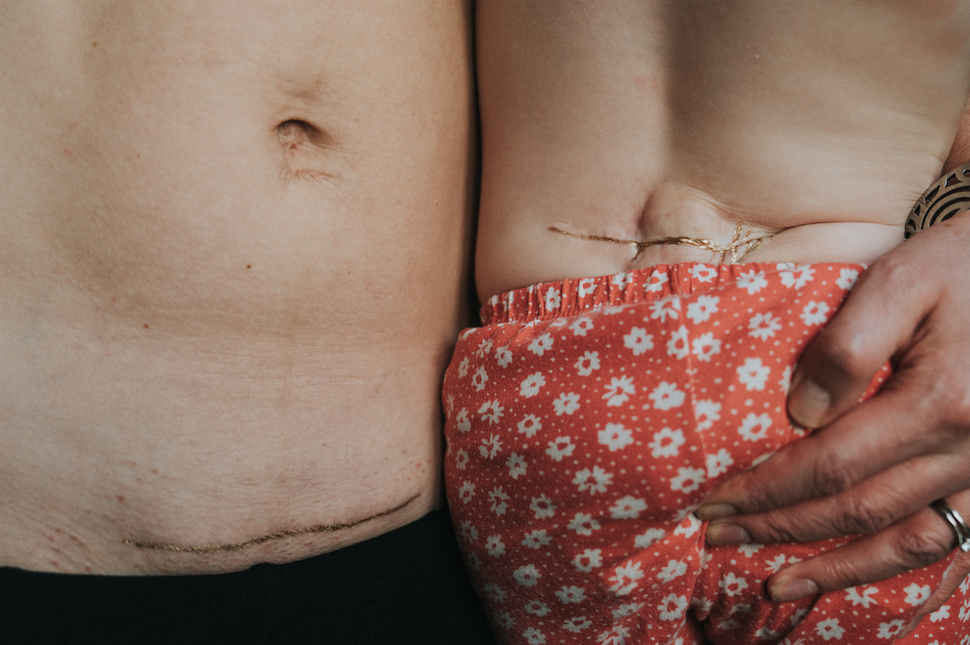
Jenny had agreed to take part in ‘The Gold Dust Project’, a photo series by Grace Elizabeth, which aims to celebrate the beauty of the scars and stretch marks women gain as they become mothers.
Grace said despite Emilia’s young age she understood what she was trying to do with this project and knew her scar made her an ideal subject.
“Absolute brownie points to Emilia for her adamancy to have her scar photographed with her mum, no matter what: it was no mean feat for her to hold herself up, but she doesn’t let anything stop her and I’m so grateful to her for her positive attitude,” said Grace.
“Emilia whizzed around on her bum when I arrived to take photos (she’d eagerly been asking her mum ‘when is the photo lady coming?’) and was so excited by the project, having never properly seen her scar before, because of its awkward placement. So, I popped some gold paint onto her, and took this photo to show her what it looked like. Her reaction was incredible, and it was one of the most amazing feelings, to see her so proud of her scar, and showing it off.
“In fact she was so proud that I have since heard that Jenny has had a hard time getting her to have a bath to wash it off!”
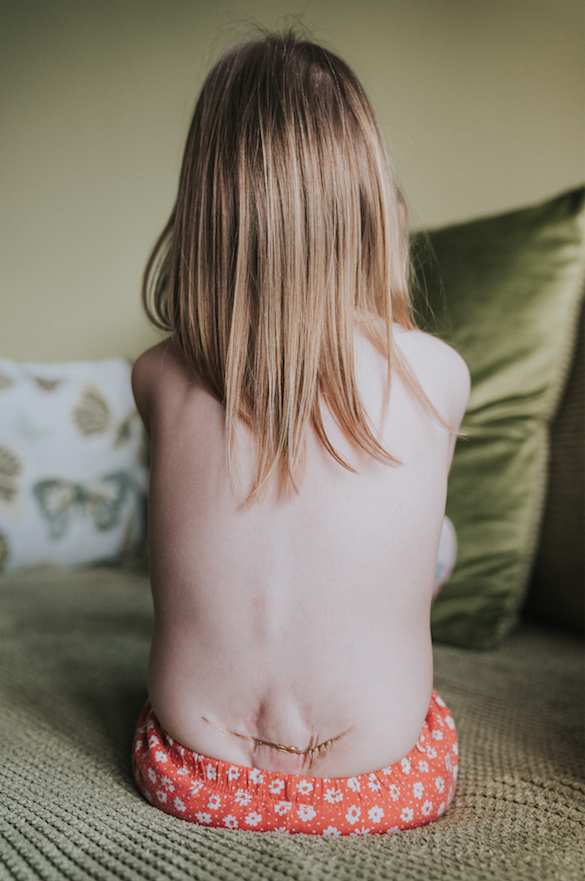
Grace’s focus on postpartum bodies came about two years ago, after she had completed her dissertation for her photography degree on the objectification of women.
“I have always been a lover of accepting our bodies, although I can admit that, at 22 years of age, I do still struggle with my own,” she explained. “I would have done anything to have a big sister or female icon to make me realise that ‘normal’ isn’t really what is depicted in glossy magazines or Instagram posts.”
Grace was inspired by personal observations of her friends, many of whom have had children in their late teens and early twenties, and seeing their relationships with their bodies and how, more often than not, they have struggled with them.
“A common factor across all postpartum women I have photographed (whether for this project or newborn work) is that almost all of the ladies have struggled with body image in some facet or another,” she said. “Whether it was a fleeting comment like ‘can you photoshop out my double chin?’ or ‘oh I’ve ended up with so many tummy rolls since being pregnant – better cover those!’ or something along those lines, the reality is, those phrases really stuck in my mind and it was clear that they stuck in the ladies I had photographed’s minds, too.
“As their bodies grew, adapted and ultimately changed, sometimes temporarily, sometimes permanently, it was clear that their body image had taken a hit. So, for this project, I wanted to focus on the changes they experienced by focusing on two dominant aspects: stretch marks and scarring, the latter mostly from c-sections, and I wanted to focus on drawing clear, in-your-face focus to them.”
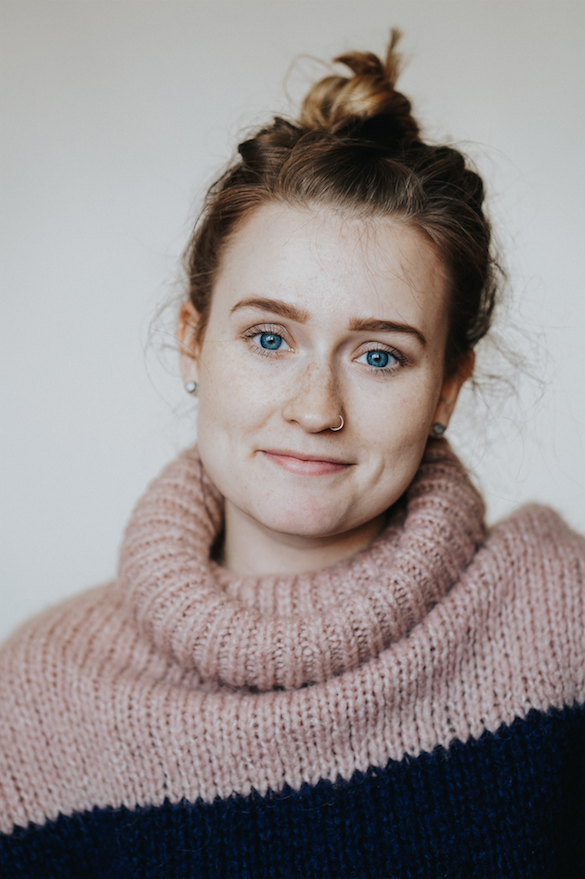
The project (which is ongoing) has involved Grace photographing a large cross-section of mothers in their own homes, with their children (or bumps), whether a few weeks or years postpartum, and decorating their scars with body-safe gold paint.
“This stems from the Japanese art of Kintsugi, something I stumbled across years ago during my school art lessons,” Grace explained. “Kintsugi focuses on fixing and putting back together broken ceramics with gold, the idea being that the ceramic item, once broken, now fixed, was more beautiful than before. I loved this idea very much, but refused to apply the ‘broken’ aspect to my project, because after all, postpartum women are not ‘broken’, and they do not require ‘fixing.’ Therefore, the Gold Dust Project draws upon the beauty of gold and their beauty in their wonderful scars and stretchmarks.”
Grace said she has been surprised by how open the women have been with her about their pregnancy and postpartum experiences.
“That wasn’t something I expected and therefore I haven’t taken it for granted throughout this project,” she said. “I was so surprised to find that so many of these ladies had had difficult experiences with their pregnancies or had negative connotations regarding their scars and stretch marks, and yet, despite this, they were so supportive of the idea of drawing attention to those two things and celebrating them.
“The sheer confidence these ladies have had in me documenting their scars and marks despite their difficult experiences really has meant the world to me.
“Emilia’s story was probably the one that really touched me the most - seeing her reaction was incredible! She was so proud of her little scar, and had to show it off to her family.”
Scroll down to see more of the beautiful photos from the series.
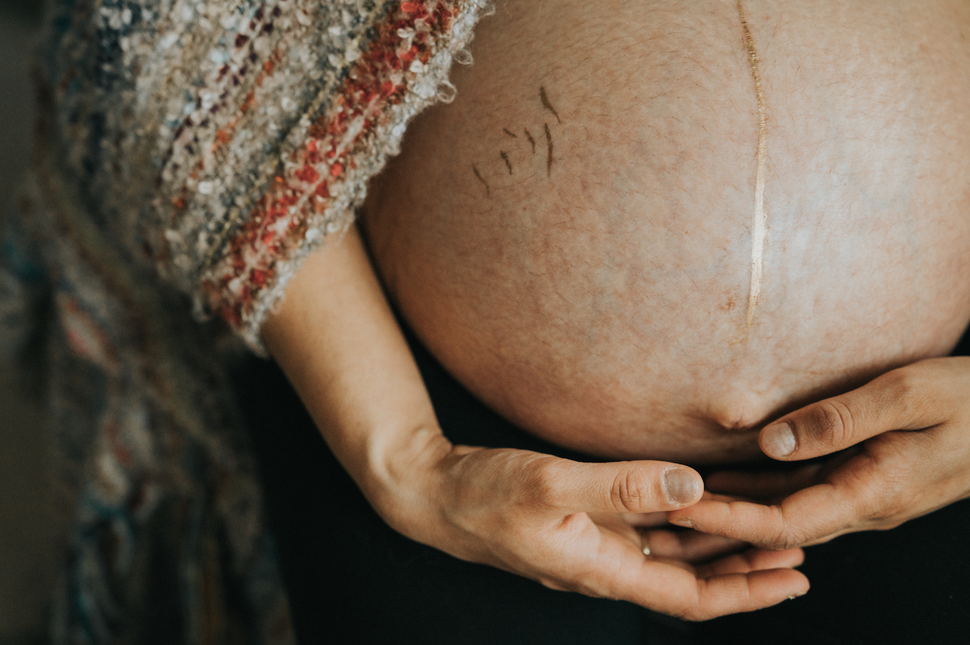
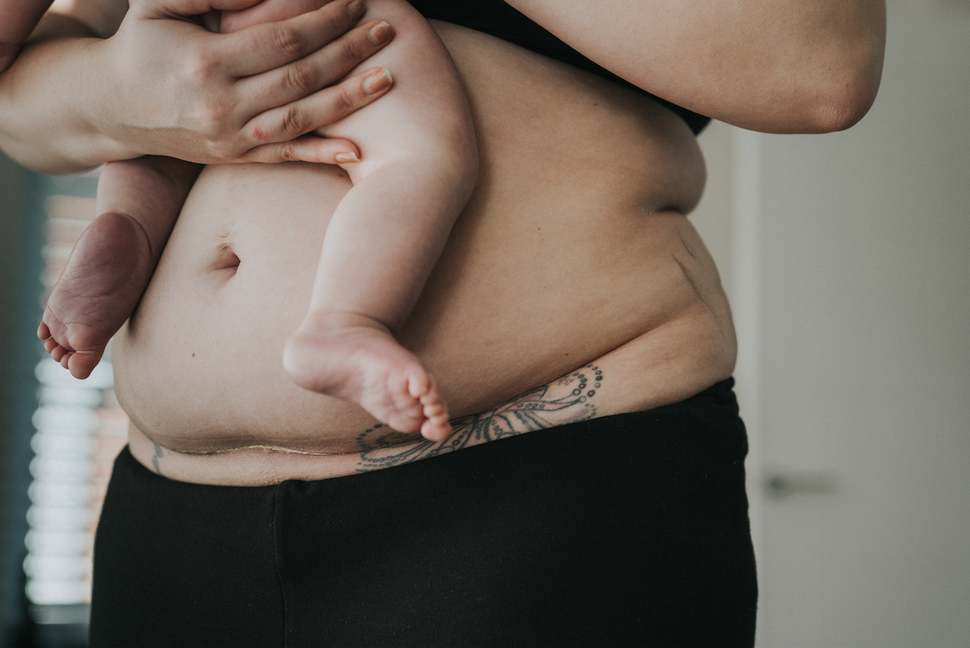
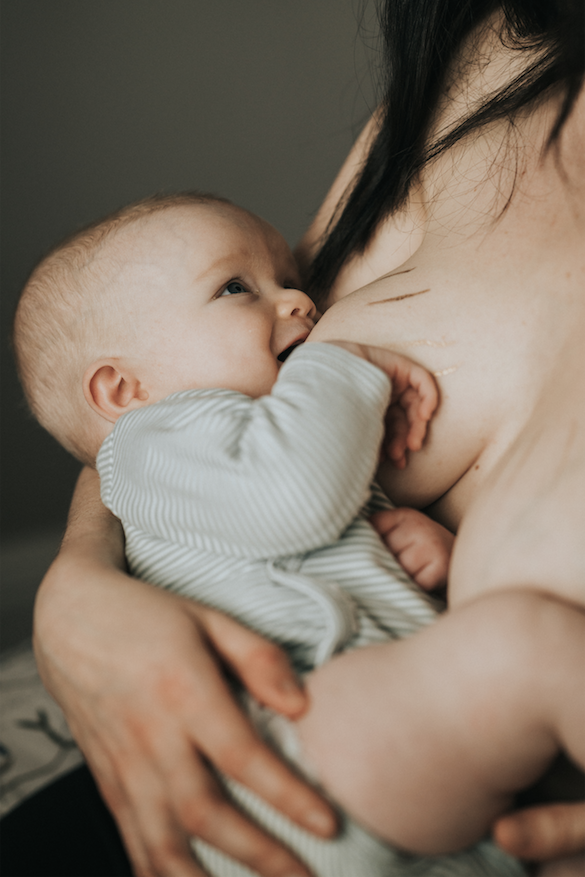
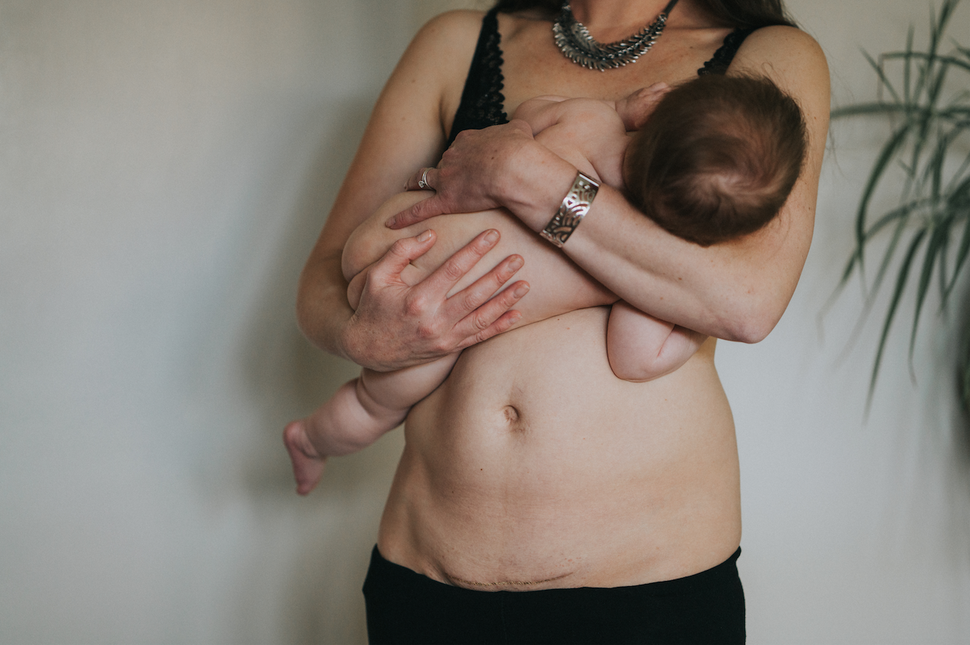
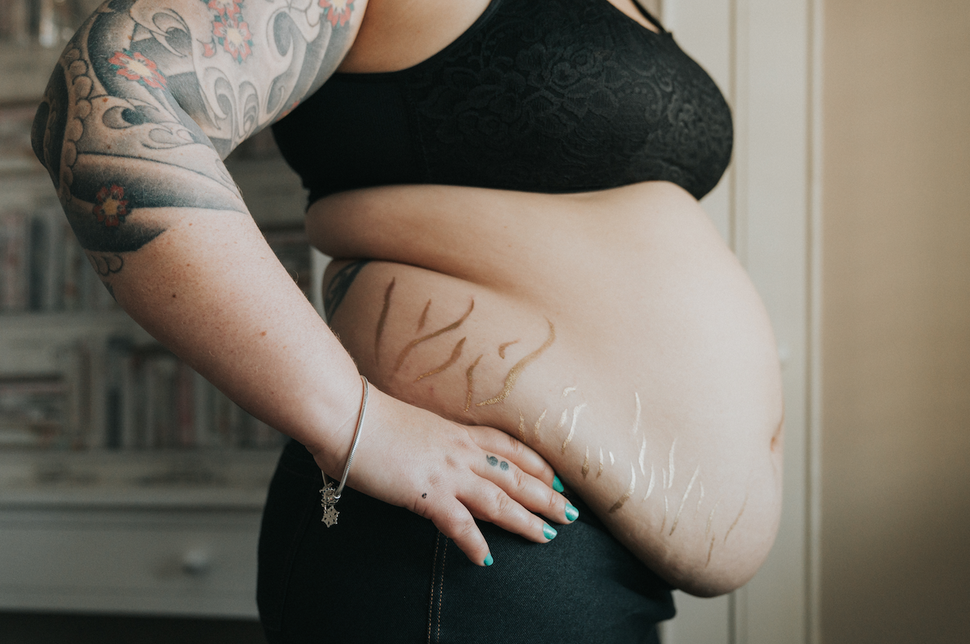
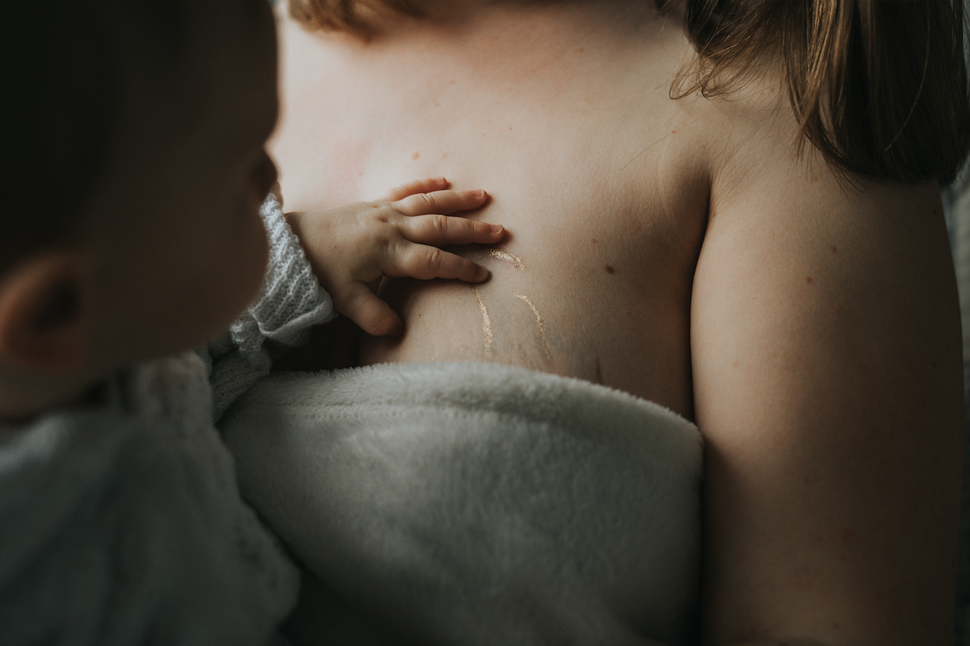
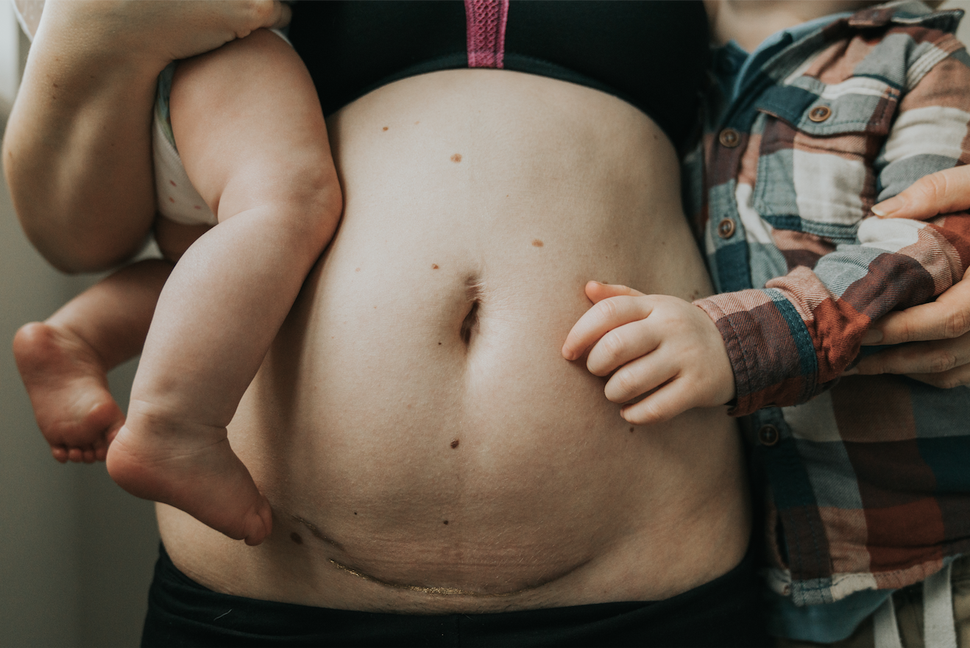
[H/T: Love What Matters]